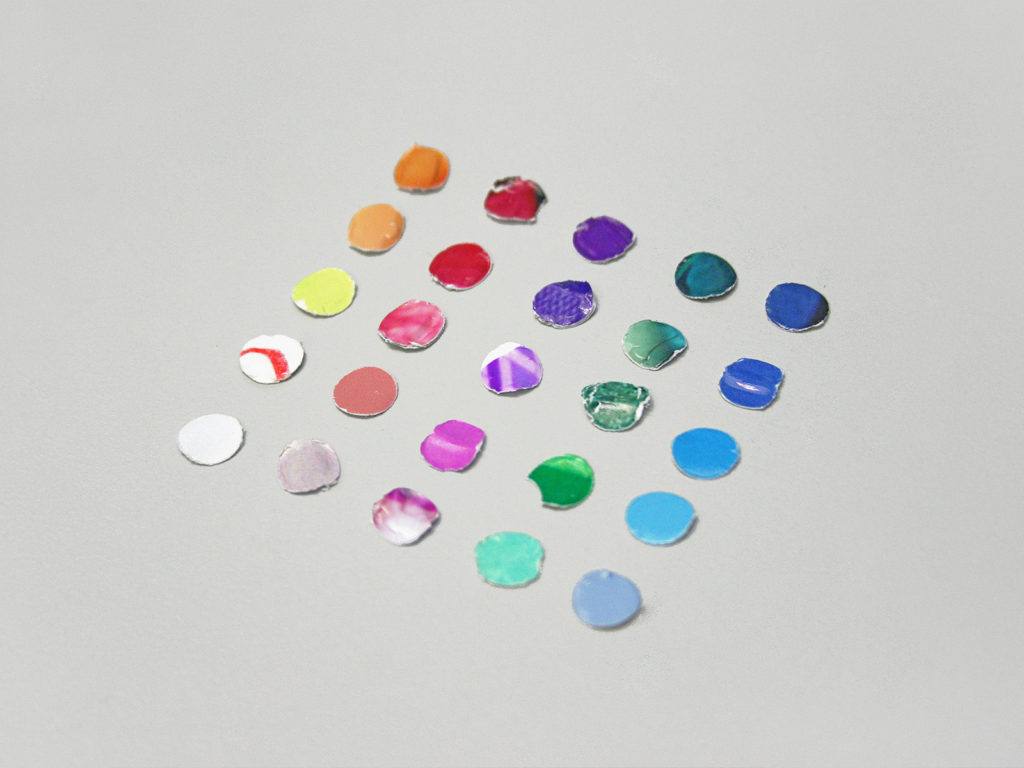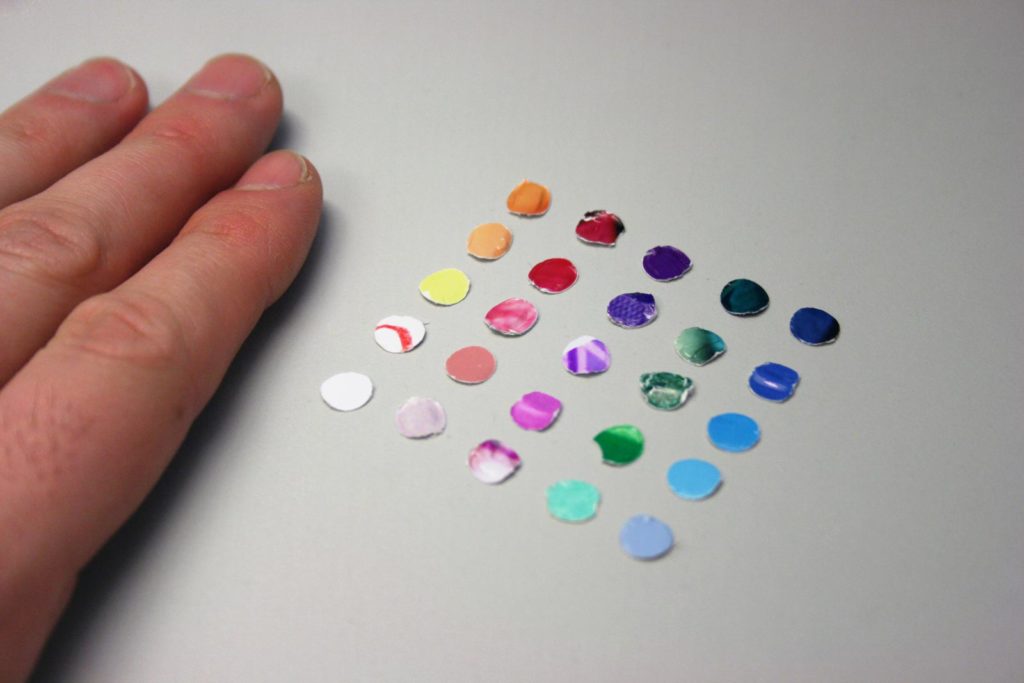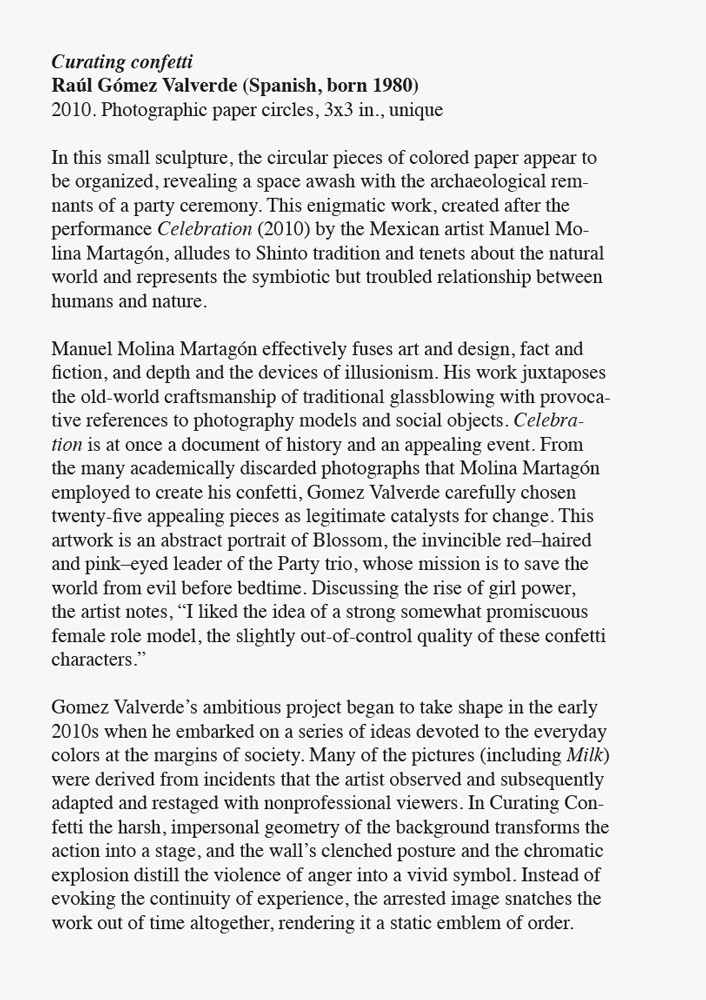Photographic paper circles. 3x3 in. overall.
In this small sculpture, the circular pieces of colored paper appear to be organized, revealing a space awash with the archaeological remnants of a party ceremony. This enigmatic work, created after the performance Celebration (2010) by the Mexican artist Manuel Molina Martagón, alludes to Shinto tradition and tenets about the natural world and represents the symbiotic but troubled relationship between humans and nature.
Manuel Molina Martagón effectively fuses art and design, fact and fiction, and depth and the devices of illusionism. His work juxtaposes the old-world craftsmanship of traditional glassblowing with provocative references to photography models and social objects. Celebration is at once a document of history and an appealing event. From the many academically discarded photographs that Molina Martagón employed to create his confetti, Gomez Valverde carefully chosen twenty-five appealing pieces as legitimate catalysts for change. This artwork is an abstract portrait of Blossom, the invincible red–haired and pink–eyed leader of the Party trio, whose mission is to save the world from evil before bedtime. Discussing the rise of girl power, the artist notes, “I liked the idea of a strong somewhat promiscuous female role model, the slightly out-of-control quality of these confetti characters.”
Gomez Valverde’s ambitious project began to take shape in the early 2010s when he embarked on a series of ideas devoted to the everyday colors at the margins of society. Many of the pictures (including Milk) were derived from incidents that the artist observed and subsequently adapted and restaged with nonprofessional viewers. In Curating Confetti the harsh, impersonal geometry of the background transforms the action into a stage, and the wall’s clenched posture and the chromatic explosion distill the violence of anger into a vivid symbol. Instead of evoking the continuity of experience, the arrested image snatches the work out of time altogether, rendering it a static emblem of order.
Exhibition history:


